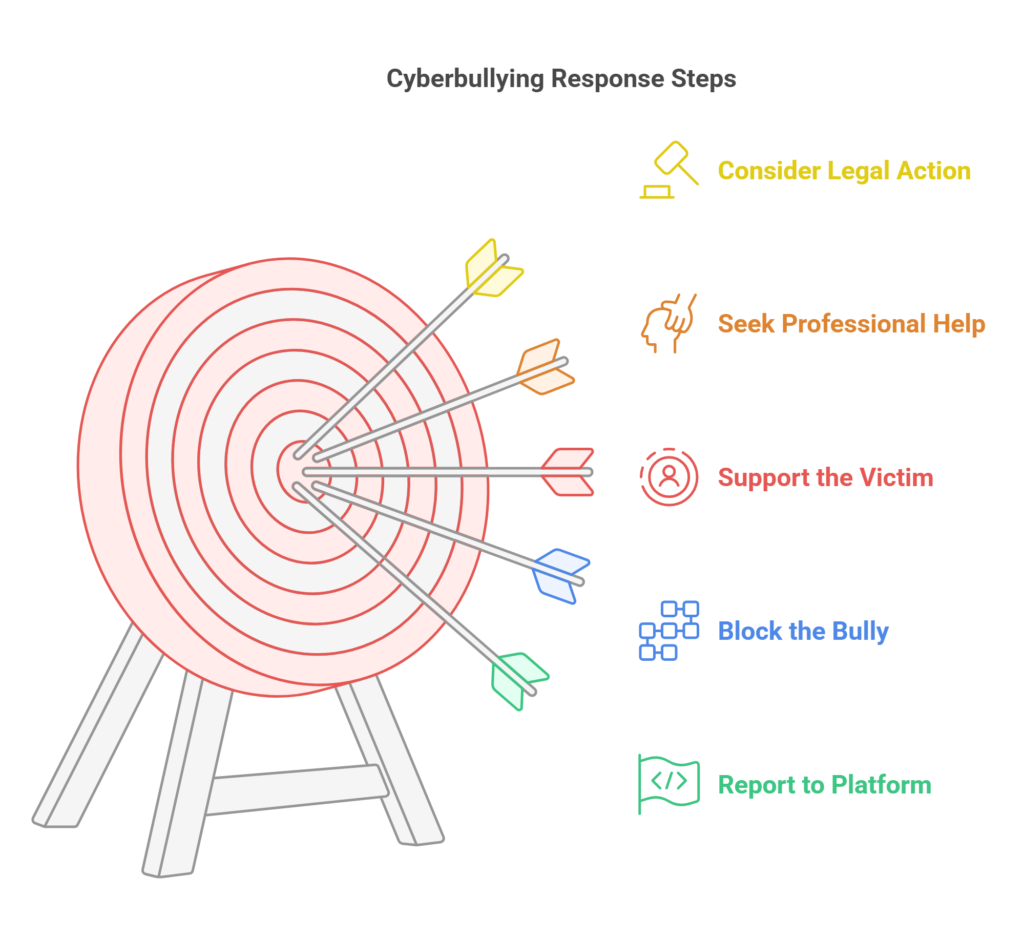Cyberbullying is a serious issue, affecting people of all ages. It is vital for adults – parents, educators, mentors, and community members – to recognize the warning signs and know how to find assistance. This comprehensive guide provides the insights you need to understand cyberbullying, identify its various forms, and take decisive action to protect yourself and others. We’ll explore different strategies for prevention, intervention, and support, offering practical advice that empowers you to make a real difference.
What Exactly Is Cyberbullying?
Cyberbullying is bullying that takes place over digital devices like computers, smartphones, and tablets. It can occur through SMS, text, and apps, or online in social media, forums, or gaming communities where people can view, participate in, or share content. Unlike traditonal bullying, cyberbullying often leaves a digital footprint—a record that can be useful in providing evidence to help stop the misuse. This digital trail, some times, is not seen, as communication can also happen in private groups and direct messages.
Cyberbullying includes sending, posting, or sharing negative, false, or mean content about someone else. It can include sharing private or embarrassing information about someone, causing humiliation or shame. Certain types of cyberbullying cross the line into illegal or even criminal behavior. This makes the identification and handling of it that much more serious. It’s a type of abuse with long-term consequences.
Forms of Cyberbullying
Cyberbullying manifests in many ways. Recognizing the different forms is essential.
- Harassment: Repeatedly sending offensive, rude, and insulting messages.
- Exclusion: Intentionally excluding someone from an online group or activity. This form of social isolation can be deeply painful, especialy for teens.
- Cyberstalking: A very serious form of cyberbullying involving persistent online contact and monitoring of a person’s activity. It often escalates to threats of physical harm.
- Outing/Doxing: Sharing someone’s secrets or private information, including images or videos, online without their consent.
- Masquerading/Impersonation: Creating a false identity online to harass someone anonymously.
- Trolling: Intentionally posting inflammatory or provocative comments to provoke an emotional response.
- Flaming: Online fights using electronic messages with angry and vulgar language.
The Psychological Impact of Cyberbullying
The effects of online abuse are profound and far-reaching. Victims often experience significant emotional distress.
- Increased Anxiety and Depression: Constant exposure to negative comments and threats can lead to heightened anxiety and depressive symptoms.
- Low Self-Esteem: Cyberbullying can severely damage a person’s self-worth and confidence.
- Social Isolation: Victims may withdraw from social interactions, both online and offline, fearing further abuse.
- Sleep Disturbances: The stress associated with cyberbullying often leads to difficulty sleeping.
- Academic Problems: Concentration and performance at school or work can suffer. The focus become escaping the situation.
- Suicidal Thoughts: In severe cases, cyberbullying can contribute to feelings of hopelessness and suicidal ideation. It’s critical to take all threats and expressions of despair seriously.
Recognizing the Signs of Cyberbullying
Identifying cyberbullying isn’t always straightforward, as much of it happens privately. Still, several behavioral and emotional changes can indicate that someone is experiencing it.
Behavioral Changes
- Withdrawal from Social Activities: A sudden disinterest in activities they once enjoyed, both online and offline.
- Changes in Device Use: Uncharacteristic secrecy around their phone or computer, or a noticeable increase or decrease in device usage.
- Emotional Reactions After Using Devices: Appearing upset, angry, or withdrawn after being online or checking their phone.
- Avoiding School or Social Gatherings: Making excuses to avoid school, social events, or situations where they might encounter the bully.
- Decline in Academic Performance: A noticeable drop in grades or difficulty concentrating on schoolwork.
- Changes is eating patterns.: victims may binge eat or avoid eating due to emotional stress.

Emotional and Psychological Signs
- Increased Anxiety or Depression: Displaying symptoms of anxiety, such as nervousness, restlessness, or panic, or signs of depression, such as sadness, hopelessness, or loss of interest in activities.
- Low Self-Esteem: Expressing negative self-perceptions or feelings of worthlessness.
- Irritability and Mood Swings: Exhibiting sudden changes in mood, becoming easily agitated or frustrated.
- Sleep Disturbances: Having trouble falling asleep, staying asleep, or experiencing nightmares.
- Complaints of Physical Symptoms: Frequent headaches, stomachaches, or other physical complaints that may be stress-related.
- Expressing Feelings of Helplessness or Hopelessness: Verbalizing feelings of being trapped or unable to cope with the situation.
What to Do If You Suspect Cyberbullying
If you think that someone you know is being cyberbullied, taking prompt and appropriate action is crucial.
Steps to Take
- Talk to the Person: Approach the person privately and express your concern. Let them know that you’re there to support them without judgment. Sometimes, simply knowing someone cares can make all the difference.
- Listen Without Judgment: Allow the person to share their experiences and feelings without interruption or criticism. Create a safe space for them to open up.
- Document Everything: Encourage the person to keep records of the cyberbullying incidents, including screenshots, messages, and any other relevant information. This evidence can be invaluable if further action is needed.
- Report the Abuse: Most social media platforms and online services have reporting mechanisms for cyberbullying. Use these tools to report the abusive behavior.
- Block the Bully: Help the person block the bully’s account on all relevant platforms. This can help prevent further contact and abuse.
- Seek Professional Help: If the cyberbullying is severe or persistent, or if the person is experiencing significant emotional distress, encourage them to seek help from a therapist, counselor, or other mental health professional.
- Involve the School (if applicable): If the cyberbullying involves students, notify the school administration. Many schools have policies and procedures in place to address cyberbullying.
- Contact Law Enforcement (if necessary): If the cyberbullying includes threats of violence, stalking, or other illegal behavior, contact law enforcement.

Supporting a Cyberbullying Victim
Providing ongoing support is crucial for helping someone recover from cyberbullying.
- Be Patient and Understanding: Recovery from cyberbullying can take time. Be patient and offer continuous support.
- Reinforce Their Self-Worth: Remind the person of their strengths and positive qualities. Help them rebuild their self-esteem.
- Encourage Healthy Activities: Encourage them to engage in activities that they enjoy and that promote well-being, such as exercise, hobbies, and spending time with friends and family.
- Stay Connected: Maintain regular contact with the person to check in on their well-being and offer ongoing support.
- Promote digital literacy: Teach safe online practices and to avoid engaging with bullies.
Preventing Cyberbullying: Proactive Measures
Prevention is key to reducing the incidence of cyberbullying.
Education and Awareness
- Educate Yourself and Others: Stay informed about cyberbullying trends and strategies for prevention and intervention. Share this knowledge with others in your community.
- Promote Digital Citizenship: Teach children and adults about responsible online behavior, including respecting others, protecting their privacy, and thinking critically about the content they share and consume.
- Encourage Open Communication: Create an environment where people feel comfortable talking about their online experiences, both positive and negative.
Building Resilience
- Foster Self-Esteem: Help children and adults develop strong self-esteem and a positive sense of self-worth. People who feel good about themselves are less likely to become bullies or victims.
- Teach Coping Skills: Equip individuals with strategies for managing stress, handling conflict, and responding to online negativity.
- Promote Empathy: Encourage individuals to consider the feelings and perspectives of others, both online and offline.
Creating Safe Online Environments
- Monitor Online Activity: Parents should monitor their children’s online activity, especially younger children. Be aware of the platforms and apps they use and who they interact with.
- Set Clear Expectations: Establish clear rules and expectations for online behavior. Discuss the consequences of cyberbullying.
- Use Privacy Settings: Teach individuals how to use privacy settings on social media and other online platforms to control who can see their content and contact them.
- Report and Block Abusive Behavior: Encourage individuals to report and block anyone who engages in cyberbullying.
Legal Aspects of Cyberbullying
Cyberbullying is not only a social problem but often a legal one as well. Laws surrounding it very from location to another.
Legal Consequences
- Criminal Charges: In many jurisdictions, cyberbullying can lead to criminal charges, such as harassment, stalking, or making threats.
- Civil Lawsuits: Victims of cyberbullying may be able to sue the bully or their parents for damages, such as emotional distress or reputational harm.
- School Disciplinary Action: Schools often have policies that allow them to discipline students for cyberbullying, even if it occurs off-campus.
Reporting to Authorities
- Law Enforcement: If the cyberbullying includes threats of violence, hate speech, or other illegal behavior, it should be reported to law enforcement.
- School Officials: If the cyberbullying involves students, it should be reported to the school administration.
- Online Service Providers: Most online platforms have reporting mechanisms for cyberbullying and other forms of online abuse.
- CyberTipline: This national reporting mechanism is an option for reporting online exploitation of children.
Concept for a third info graphic: A spectrum graphic showing different kinds of cyberbulling, from less severe (like exclusion) on one end and up to more severe (like cyberstalking) on the other.
alt text: Spectrum showing the severity of different kinds of cyberbullying.
Resources and Support
Numerous organizations and resources are available to help individuals and families affected by cyberbullying.
Support Organizations
- StopBullying.gov: A federal government website managed by the U.S. Department of Health and Human Services that provides information and resources on bullying and cyberbullying.
- The Cybersmile Foundation: A nonprofit organization dedicated to tackling all forms of digital abuse and bullying.
- Common Sense Media: Provides advice and resources for parents and educators on navigating the digital world.
- National Suicide Prevention Lifeline: Offers 24/7, free and confidential support for people in distress, prevention and crisis resources for you or your loved ones, and best practices for professionals. Dial 988 in the US and Canada, 111 in the UK. These services are free, confidential, and available 24/7.
Crisis Hotlines
- Crisis Text Line: Text HOME to 741741 from anywhere in the USA, anytime, about any type of crisis.
- The Trevor Project: A national organization providing crisis intervention and suicide prevention services to lesbian, gay, bisexual, transgender, queer, and questioning (LGBTQ) young people under 25.
Quick Takeaways
- Cyberbullying is a pervasive problem with serious emotional and psychological consequences.
- Recognizing the subtle signs of cyberbullying is the first step in getting support.
- Documentation and reporting are key steps in addressing cyberbullying incidents.
- Prevention efforts should focus on education, building resilience, and creating safe online environments.
- Legal consequences for cyberbullying can be severe, including criminal charges and civil lawsuits.
- There are resources available to support victims.
- Immediate action will limit the spread of cyberbullying.
Conclusion
Cyberbullying is a complex issue, requireing a multi-pronged approach. By understanding the signs, knowing how to respond, and working to prevent it, we can create safer and more supportive online environments for everyone. Remember that seeking assistance is a sign of strength, not weakness, and that numerous resources are available to provide support and guidance. Taking action, no matter how small, can make a significant difference in the life of someone experiencing cyberbullying. It is a community responsability to foster respect and empathy in our ever expanding digital world.
Frequently Asked Questions
- What’s the difference between cyberbullying and traditional bullying? Traditional bullying typically happens in person, while cyberbullying occurs online or through digital devices. Cyberbullying can be more relentless, as it can follow the victim home and happen at any time of day.
- How can I help a friend who is reluctant to report cyberbullying? Acknowledge your friend’s feelings and concerns, assure confidentiality. Explaining the benefits of reporting, such as preventing further abuse and protecting others, is helpful. Offer to help them report it.
- What should I do if my child is accused of cyberbullying?Take the accusations seriously. Talk to your child calmly and listen to their side of the story. Review their online activity and address any inappropriate behavior. Seek counseling if needed.
- Are there any apps that can help monitor my child’s online activity? Yes, several parental control apps can help monitor online activity, set time limits, and filter content. Examples include Bark, Qustodio, and Net Nanny.
- If an adult is being cyberbullied, is reporting it still important? Absolutely. Reporting is crucial for adults, too. It helps stop the abuse, holds the bully accountable, and can prevent them from targeting others. It also opens the door to support resources, such as counseling or legal assistance.



